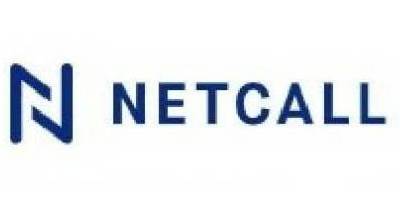Is low-code the solution the insurance industry has been looking for?
James Lawrence, Director of Insurance, Netcall
McKinsey’s latest global insurance report showed the pandemic’s glaring impact on the already struggling insurance sector. In 2020, premium growth contracted to just 1.2%, compared with a growth rate of over 4% per year across the 10 years prior; profits fell by around 15% compared to 2019.

As the industry tries to move forward, there is a trend of stagnating demand, with growth in developed countries largely relying on price increases rather than on new cases and new risk coverage.
Where the industry is seeing value is in insurtechs, which refer to organisations using technological innovations to drive efficiency and savings. Their digital innovation poses a competitive threat to traditional insurers who fail to digitise.
Last year alone, insurtechs drew $11 billion in venture capital investment – double the amount the year prior.
Insurtechs are a by-product of consumer demands for digital and convenient services. If traditional providers take advantage of advanced technologies like low-code, robotic process automation, artificial intelligence, machine learning and intelligent automation, they can still come out on top.
With the adoption of a low-code application platform insurers can digitise and automate throughout the risk and insurance value chain, including in claims, underwriting, distribution, compliance and customer experience.
What is driving digital transformation in the insurance sector?
According to research conducted by Hayhurst Consultancy for Netcall and The Davies Group, the impact of COVID and efforts to improve customer retention, operational efficiency and competitive advantage are encouraging insurance brokers and underwriters to focus on digitised customer experience.
 What is hindering digital transformation for traditional insurers?
What is hindering digital transformation for traditional insurers?
Legacy systems: There are few traditional players that don’t have legacy systems, which create difficulties when trying to develop an agile digital infrastructure. Legacy systems result in data silos, obstructing end-to-end customer journeys. This delays the entire claims and case management processes, taking up valuable resources and creating a dissatisfying experience for customers.
Lack of expertise: Another common issue is a perceived lack of the technical expertise needed to drive development. This can lead some insurers to turn to off-the-shelf solutions. However, the inflexibility of this development short cut makes it impossible for insurance companies to tailor their digital transformation journey to meet the unique needs of their operations and customers. It also creates challenges down the road when companies need to upgrade solutions or want to scale their automation efforts.
Remote working: The shift to remote or hybrid working models has been a substantial barrier to transformation for insurance brokers and underwriters. It has made it difficult to bring workers on board the digital transformation journey and made overhauling legacy systems even more difficult than it already is.
 How do insurance companies overcome these obstacles?
How do insurance companies overcome these obstacles?
Insurance companies need digital solutions that play well with their legacy systems, allowing them to dismantle outdated platforms incrementally instead of enduring the cost and risk involved with a mass overhaul of the entire infrastructure.
By using a low-code application platform, companies can tailor and develop their own applications to best accommodate their needs. The drag and drop functionality means existing business users and IT team members can be trained to drive development.
In addition to ease of use, a low-code application platform provides a cost-effective and modifiable solution that empowers businesses to drives digital transformation at their own pace and on their terms.
It provides opportunities for competitive advantage that a uniform off-the-shelf digital solution cannot, without the cost, risk, time and technical expertise that traditional development requires. Its iterative capacity, allowing development teams to quickly test and modify applications, outpaces that of traditional development. This provides a great launchpad for innovation – something that traditional insurers need to attract new customers and develop new risk coverage.
Legal & General, a financial services and asset management multinational, adopted a low-code platform to address the issue of siloed data, improve visibility over operations, and speed up processes. By adopting a comprehensive single platform, the company’s users were able to quickly learn how to develop with their new digital tools and promptly began dismantling one of their legacy systems.
In one example of the iterative capacity of low-code, they brought down the processing time for one claims journey from two days to 38 minutes, and then, through trial and error and input from users and stakeholders, brought that down to just 20 minutes.
Paul Buckle, Change Manager at the company, said, “A claim is a difficult time for a customer, the last thing they want is long calls to their insurer to understand their claim. We wanted to make that customer journey quicker, and to communicate more effectively”.
Low-code enables them to do just that, avoiding unnecessary frustration for customers dealing with the likes of critical illness and death claims. Someone in those circumstances should not have to repeatedly explain their situation to multiple people to settle their claim.
 What processes can a low-code application platform help insurers with?
What processes can a low-code application platform help insurers with?
With the creative capacity of low-code, insurance companies can develop and innovate for whatever processes they think would benefit from digitisation. However, there are some common insurance processes ripe for automation.
Fraudulent claims detection can be improved and settlement times and costs for claims can be predicted with artificial intelligence-powered machine learning (ML) models that can analyse data for patterns, insights and predictions. Low-code applications combined with robotic process automation can then be used to automatically act on ML insights and loop-in human workers as needed.
This saves costs and increases productivity for insurers. Customer experience is bettered through a seamless end-to-end journey that keeps them updated throughout their claims process. Fraudulent claims can be identified early, stopping scam operations before they have a chance to be successful. Insurers are also able to appropriately delegate resources by knowing the processing costs and timeframe for claims.
Supply chain and case management, as well as virtual inspections, can also be enhanced by connecting systems and automating processes with low-code. This can provide visibility over claims’ suppliers and their performance, including volume, costs and quality, as well as the entire case management process, including how many cases are being handled and by who, when they came in, and where they are in the queue. This creates the opportunity to expose bottlenecks or inefficiencies for improvement.
Timely manual work can be eliminated by adopting a platform that works well with other systems. Any errors are automatically flagged by the system, saving rework time. Automated steps free up staff’s time, enabling them to spend time on more complicated customer queries. Customers are kept-up to date along the way and delivered a faster yet tailored experience.
These effects are compounded by using low-code to develop a customer portal. This brings all channels together through a centralised platform to meet customer demands for self-serve options, while also easing the burden on staff. Free-flowing data provides complete visibility of customers’ entire journeys with your company. Administration is reduced thanks to automated processes within the customer portal, including automated customer updates in the back-end system and synchronisation with other systems, so that information is available when an agent needs it.
Outlook moving forward
Demand for insurance is expected to continue growing worldwide – the question is whether traditional insurers will adopt viable models that enable them to compete with rising insurtechs. This will require effective investment management into emerging advanced technologies and focusing on an improved customer experience, which will require the right balance between automated and streamlined processes, and human provided customer service. Low-code development affords businesses the opportunity to digitise incrementally with existing resources, without sacrificing innovation and efficiency gains.
![]()
 Netcall is a leading provider of AI-powered automation & customer engagement solutions. A UK company quoted on the AIM market of the London Stock Exchange. By enabling customer-facing and IT talent to collaborate, Netcall takes the pain out of big change projects, helping businesses dramatically improve the customer experience, while lowering costs. Over 600 organisations in financial services, insurance, local government, and healthcare use the Netcall Liberty platform to make life easier for the people they serve. Netcall aims to help organisations radically improve customer experience.
Netcall is a leading provider of AI-powered automation & customer engagement solutions. A UK company quoted on the AIM market of the London Stock Exchange. By enabling customer-facing and IT talent to collaborate, Netcall takes the pain out of big change projects, helping businesses dramatically improve the customer experience, while lowering costs. Over 600 organisations in financial services, insurance, local government, and healthcare use the Netcall Liberty platform to make life easier for the people they serve. Netcall aims to help organisations radically improve customer experience.
For additional information on Netcall view their Company Profile




